Buyer’s Guide to Having a Pot Filler in Your Kitchen
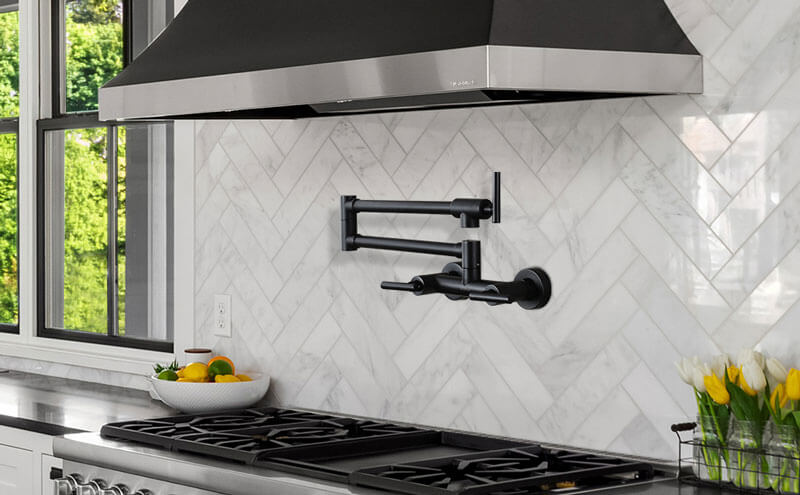
Is there an empty space in your kitchen that’s crying out for attention? Are you tired of carrying heavy pots of water from the sink to the burner, only to splash some outside of the lid or worse, drop it entirely and have to start over? There is a solution for both of these problems. If you are looking for an easy commute to get water onto a boiling burner, the easiest solution is to have the water right there. Do you need an extendable sink hose? No. You can deliver it directly into the pot over the burner from a Pot Filler Faucet Arm.
Table of Content
What are pot filler faucets
Pot Fillers are special, unique attachments that add a sense of luxury and professionalism to any kitchen. They are swivel-handle faucets that are installed over or near a stovetop range. The purpose is to give easy access of water to a pot without having to move it on and off the burner from a sink or other faucet. It’s all the water you need for a pot with none of the movement to get it there.
This is ideal for people who cook a lot and are particularly fond of cooking with lots of water. Things like pasta, especially, which requires a very heavy amount of water to properly come to a boil. It’s an extremely convenient attachment that requires some extra work to be done, but saves tons of hours in the labor that it takes to transport heavy pots of water from one place to another.
Most popular pot filler faucet – Recommended
Pros and cons of pot filler faucets
Pot Filler Faucet Advantages
- The main advantage is the convenience. It allows you to have access to cold water directly over the stove without having to navigate back and forth from a basic sink or faucet. Even the closest sink to an oven can still be a little too far when handling dozens of pounds worth of water. This reduces the strain and simplifies the process of loading up a pot for boiling.
- Having water directly over the stove can be used for other things as well, such as steaming covered pans or rinsing pans right after the cooking is done and the grime has yet to settle. Adding water to the hot pans causes steam, which is perfectly harmless over a vented oven range designed to take away the excess heat and smoke through a fan intake overhead. So it can even protect you from the dangers of washing hot pans until they’ve cooled down enough for the sink.
- A pot filler will also free up your sink so you can continue to use it without having to manage around having a heavy, wide pot that takes it all up. You can multi-task, clean up dishes while the pot fills, and manage the water flow independently between the water faucet over the stove and the one built into the regular basin.
- Pot filler attachments can fold and extend at a wide degree of angles. They are usually two jointed, with a pivot in the wall and at a midway point, which allows it to reach across the entire range from burner to burner with just a small amount of force needed to adjust its position. The adjustability means there is no need to dedicate one burner to being the water pot burner since the faucet can reach anywhere.
- Pot fillers are seen as luxury items for kitchens. They are automatically considered fancy and elegant, as a convenient solution to a fairly common problem that most people willingly accept without thinking about it. Having one in a kitchen will automatically elevate the whole place to another grade, and improve the overall appearance of the kitchen as a result.
Pot Filler Faucet Disadvantages
- Keeping the pot filler clean can be tricky. It’s another faucet, so it should be easy to stay as clean as the rest of the faucets you have, but it has a catch. It has moving parts, where smoke or grease can get in and stay stuck. Since it’s right over the cooking, splashes and smoke will be hard to avoid. Care must be taken to keep it folded away when there is food on the stove that could splash up and dirty it. It can move its main parts far enough away, but it will always be part of the stove.
- Because it has these extra moving parts, it may also be prone to easier leakage than standard static faucets. Normal faucets usually only leak from one place, and while there are many causes, the solution only requires one part to be inspected. If a pot filler arm leaks, it will leak directly onto the stovetop. That could be disastrous for electric ranges and detrimental to gas burners as well. At worst, the whole thing may need to be disassembled to find the source and patch it up, which in the meantime could shut off water for other nearby fixtures, like the regular kitchen sink.
- Pot filler arms need to be specially installed, usually by professionals who can reroute the water pipes behind the wall. Your stove doesn’t normally need a water supply, so it’s not common to have readily accessible pipes behind the wall where the stovetop is. New ones will have to be fitted and accessed for the pot filler to function. This makes it ideal for large renovations where the walls may come down or appliances get repositioned, but it restricts the asset from being installed easily or in a weekend.
- Pot fillers, or Pasta Arm, faucets are really only as good as they are useful. If you don’t cook with pots of water very often, or kettles or anything else that needs to be hot but also full of water, then having one may not be a sound decision. You should only get it if you plan to regularly use it, because the installation cost alone is very steep. It’s not a simple appliance that can be unplugged and put away or forgotten. Once it’s there, it will always be insight, whether it’s abandoned or corroded from constant use without cleaning.
How do you know if a faucet/pot filler is made of plastic or brass?
Generally speaking, you don’t want certain materials for your water-based fixtures. They can degrade easier, or are less sanitary. Plastic is a cheap material that can often produce cheap results. Plastic fixtures like faucets or water pipes suffer the most from damage. First, plastic can warp from heat over a long period of time. This means nothing for a pot filler, which will only use cold water, but it will still be over a stove, arguably the hottest place in any kitchen, continuously. It can crack under pressure where metal wouldn’t, and it tends to clog easier which can lead to lower water pressure or backups and leaks.
You don’t want a plastic faucet if you can help it. Some brands deal mostly with plastic items which will have metallic exteriors or finishes. You should do some research into a brand and model number to see what materials are included. Most faucets of any kind will have a small amount of plastic in them, either for the handles or the valves or other smaller fittings. If you want to make sure you are getting a quality, long-lasting pot filler faucet, you need to make sure it’s the right material all throughout.
What is the best position for the pot filler?
The pot filler is designed to be fitted over the stove. It’s usually dead center to a stove so that it can reach every burner and fill a pot in any spot. It also depends on the length of the arms, however, and even the overall intent before its installation. If you already know where all your pots will go, you can adjust the position for the installation so that it will reach to only those burners. A pot filler arm can also be installed within reach of a cleared-out space where it can fill up other appliances like coffee makers that don’t need to go on the burner.
It all depends on your kitchen setup. Many kitchens may be similar, but yours will be unique. If you have a sink next to the oven, and the water supply is more immediately accessible from the wall near the sink than it is near the stove, you can install it there and make sure the arm is long enough to follow over to the stovetop. The whole point of a pot-filler arm is not to be a weird, unique sink faucet, it’s to fill pots while they are on top of the stove so the heavy water isn’t moved around too much. No matter what, you should make sure your pot filler is in range of the stovetop.
How to install the pot filler faucet
Installing a faucet over a stove from a wall mount is exactly as hard as it sounds. It’s usually installed in a place where there are no existing fixtures for a water supply. If that is the case, then new fixtures need to be laid and connected with the existing water supply that’s either under the floor or behind the wall panels. And of course, those walls will need to come off in order to get at all of that. Installing a pot filler requires remodeling. It’s not something that’s easy to do over a day, even if you know-how.
Matters like this are best left to professionals who can safely move things around and hook everything up. The electricity and water pressure for the kitchen will have to be off. This will prevent the stovetop from potentially being damaged during the movement. If the stovetop is connected to a full oven that can be moved around on the floor, that will ease up some of the work. If the range is built into the counter and can’t be unplugged and moved easily, then it will create a complication.
The process for installing one starts with installing a wall mount. This will require a pipe that leads up to the desired height within the wall. Then, a supporting back panel has to be fixed in place. This is where the faucet will hang from inside the wall. From there, the water supply is connected to the valve and the fixture which will then serve as the base where the arm is attached. This part will stick out of the wall and be framed by a protective covering to blend in more effectively. Then, the faucet is connected, the water is turned back on, and the one-lever design should release a steady flow once everything is turned on and running again.
Pot Filler Faucet Finish
Nickel
Nickel is an industry standard finish that shows off the most basic appearance of a very common metal that is used for many faucets. It comes in varieties, such as brushed or polished, to suit the needs of any kitchen’s design. Polished tends to be more common, and easier to maintain, while brushed nickel can appear very soft and natural without looking dirty or grimy.
Bronze
Bronze finishes give off a very striking appearance from a distance and command a sort of presence that can tie a kitchen together. This is especially true for something as stand-out as a pot filler arm. It comes in different styles, but oil-rubbed gives it a very dark but lustrous sheen that’s hard to get in other materials. Well treated bronze can elevate a kitchen, and it matches the Mediterranean style that a “pasta arm” faucet brings.
Chrome
Chrome is always shiny, all the time. It takes a little more to upkeep to keep it that way, but it provides a very clean and commercial look to a kitchen. Having a chrome finish will make you look like a pro when you swivel the faucet around to fill up matching, shiny, polished pots and pans. Try to keep everything chrome and keep it all sparkling clean for a sort of retro-future kitchen that’s sterile but stylish.
Brass
The golden-yellow shimmer of brass can feel warm, like sunlight, in the middle of a room. It’s usually best matched with the wall behind it to be a natural extension of the house rather than just one color added to many others. Brass finishes can be polished and reflective or brushed and matted, which makes them easier to clean and maintain.
Gold
Gold is always a high-fashion, high-lifestyle choice that shows off the extent of luxury you’re willing to put out in the open. It’s expensive, but it never corrodes or rusts and is easy to clean. Gold is a statement about how much you’re willing to put into your home to make every part of it look lavish and intense. It’s also a pleasing color to look at, from a psychological perspective. The only thing bad about having gold plating is the cost.
Stainless Steel
This is the standard for basically everything. It doesn’t rust, is easy to clean, and is heavy duty. Stainless steel finishes are probably the most common for kitchens because they’re also the cleanest and easiest to maintain, and cleanliness is what you need in a kitchen more than anything else. Combine that with the natural convenience of the swivel pot filler faucet arm and you will have a true piece of utility in your wall.
Black
They say black never goes out of style. That rings true for most fashion, but how does it work in a kitchen environment? Black has the effect of adding a heavy-duty atmosphere. Some kitchen ware may be black, teflon coating is usually black and cast iron pans and pots are black. The material may be different based on the brand, but having a black tool sticking out of the wall can be either a rustic compliment or a very modern chic look. But it will get dirty faster, especially with visible dust.
Copper
Copper can be viewed as a negative metal when it comes to fixtures due to the possible presence of mineral leakage that gets into the water. Copper has a sort of flavor to it when water passes through it that is not enjoyable. However, copper finish means that all of that is on the outside of the faucet, not the inside, which allows you to enjoy the shiny orange or aged but well-preserved green of copper as one of the most naturalistic metals for any rustic or old-styled kitchen.
 WOWOW Faucets
WOWOW Faucets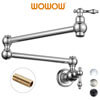
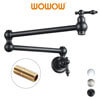
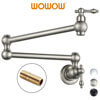
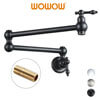
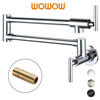
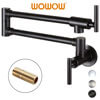
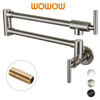
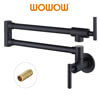
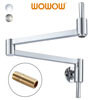
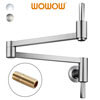
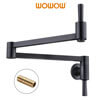
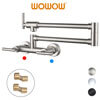
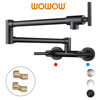
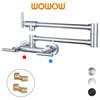
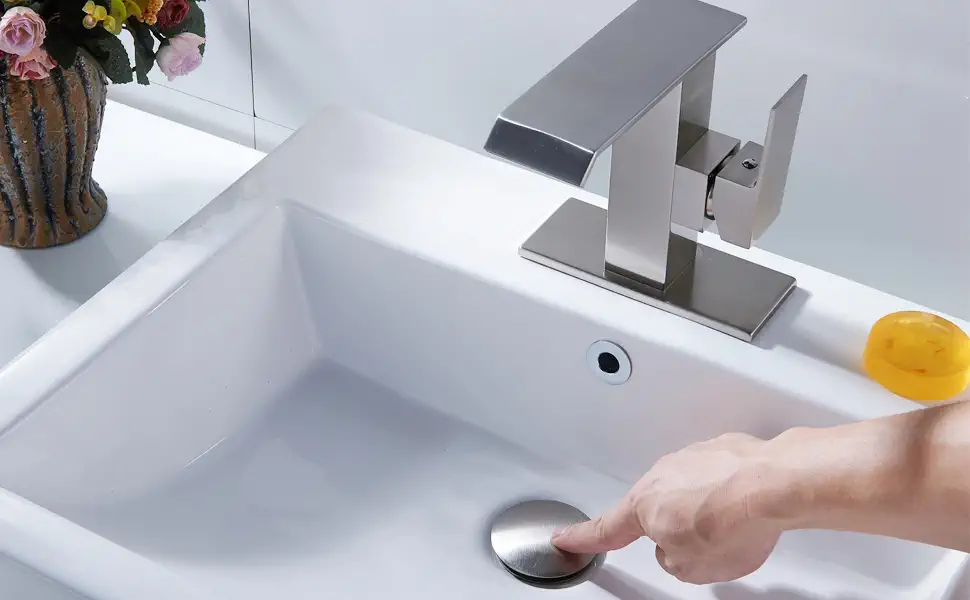
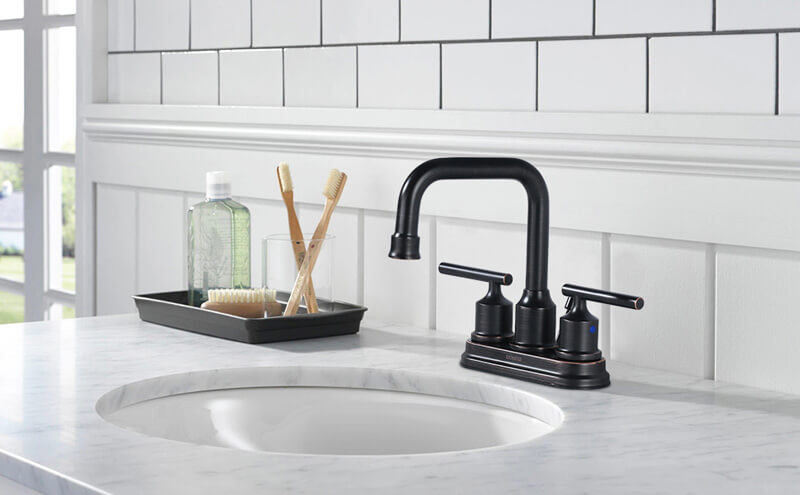
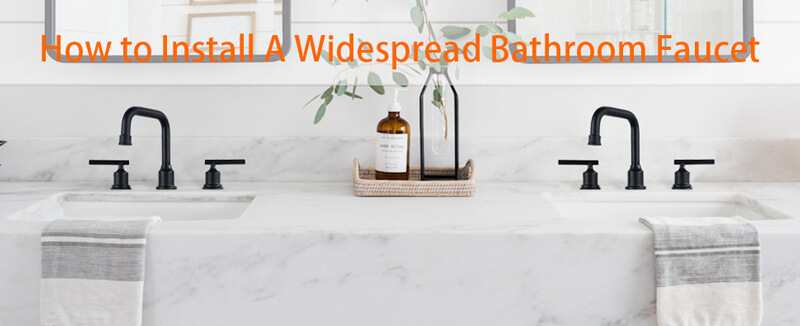
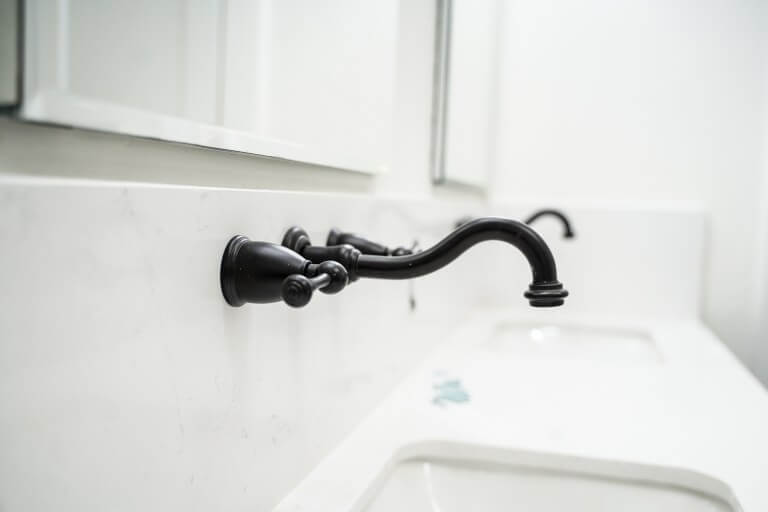
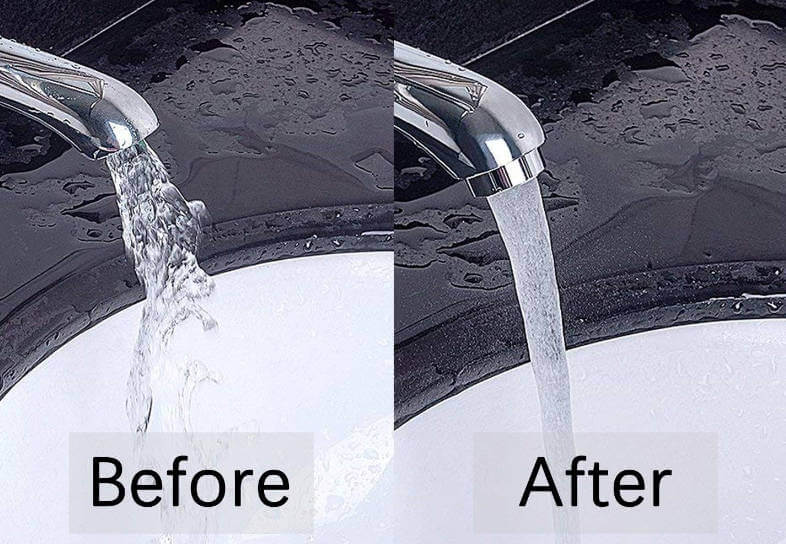
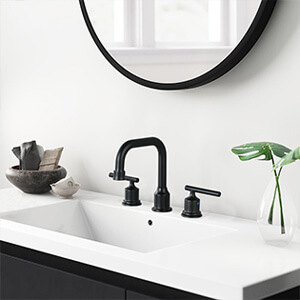
您好!Please sign in